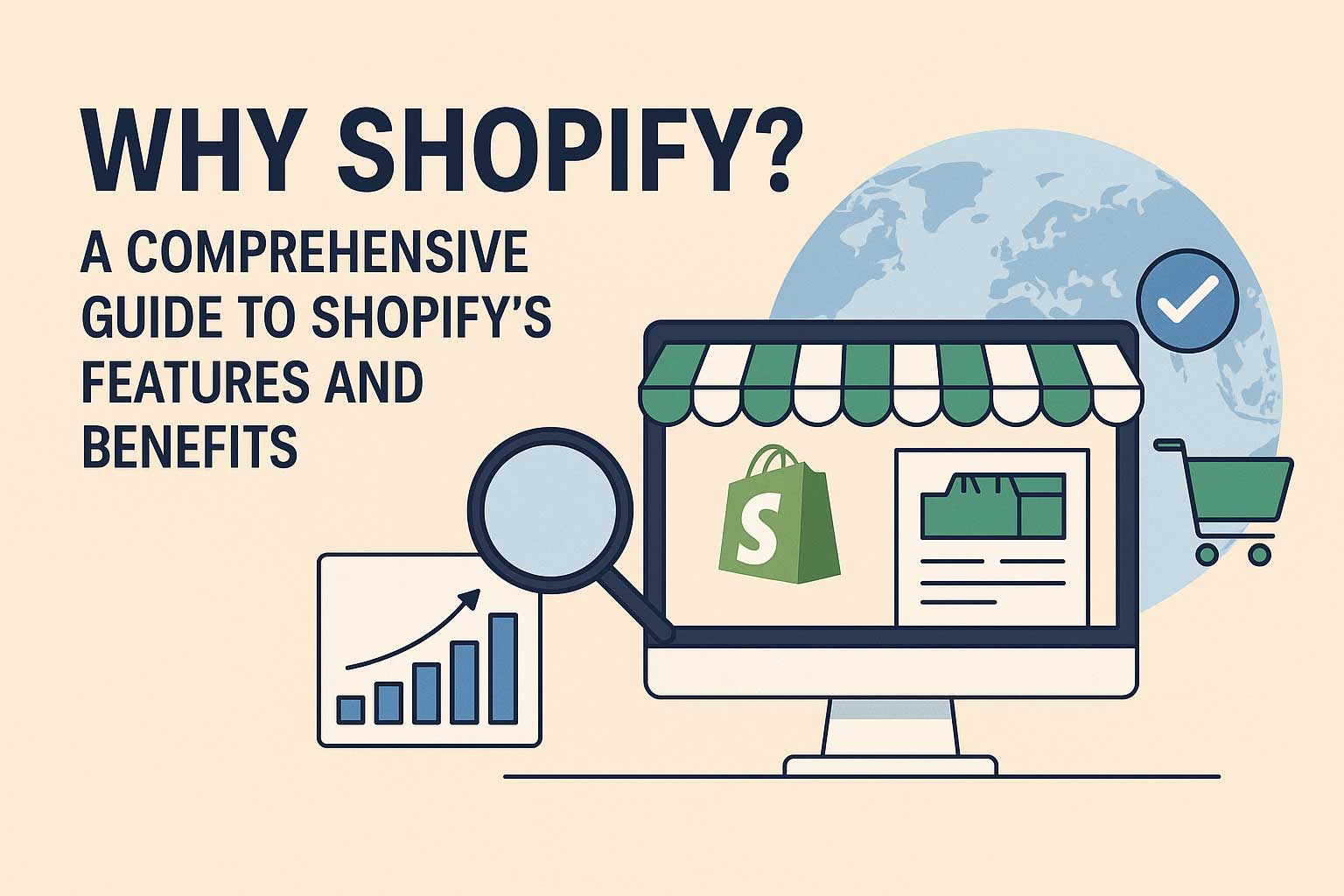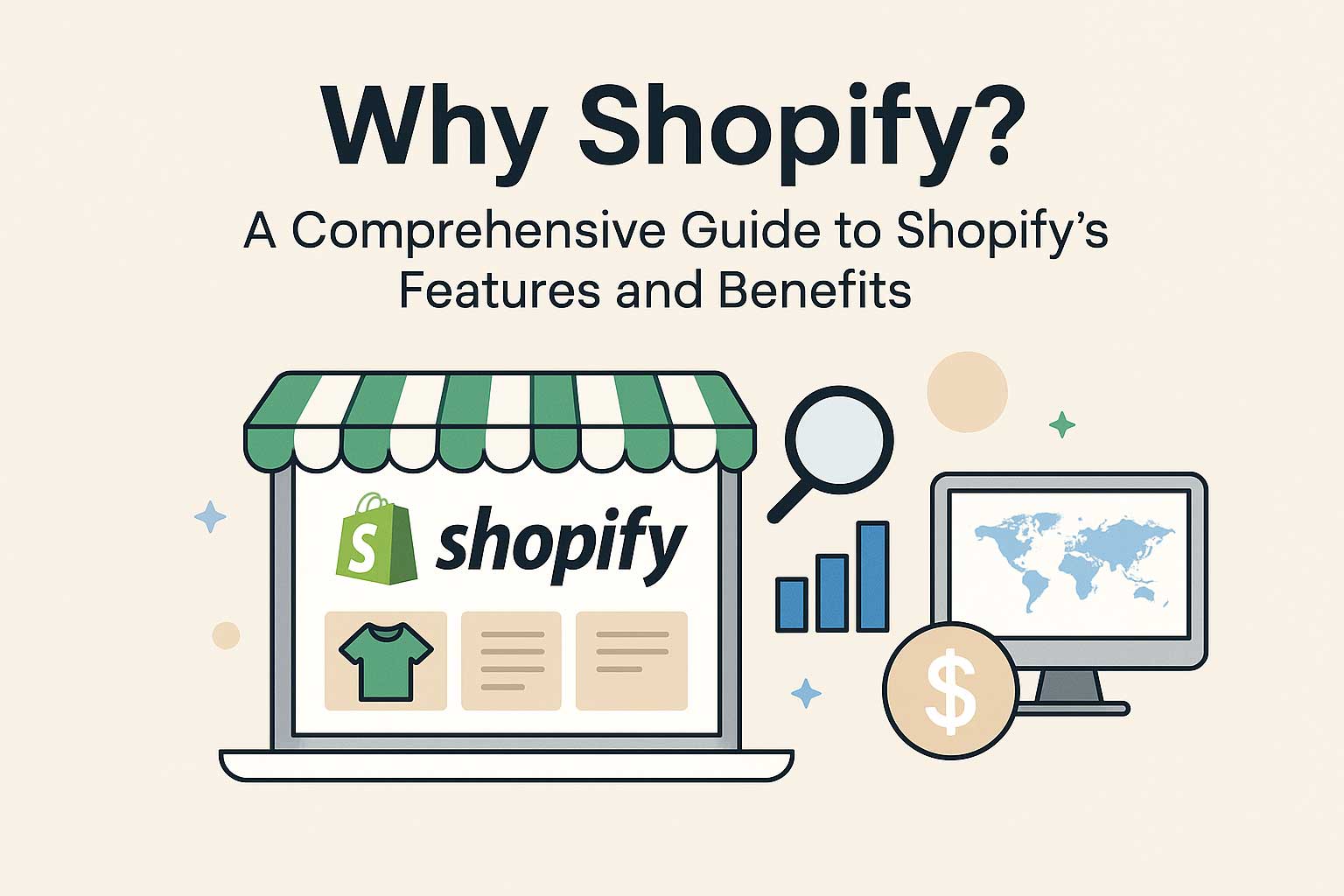Introduction
The e-commerce landscape has evolved dramatically over the past decade, and choosing the right platform for launching and scaling an online business has never been more critical. Among the leading contenders, Shopify stands tall as one of the most popular and robust solutions. Powering millions of merchants worldwide, Shopify offers a complete ecosystem designed to simplify e-commerce while providing advanced features that accommodate everything from solo entrepreneurs to large enterprises.
This comprehensive guide explores Shopify’s most important features, tools, and advantages, offering insights into why it has become the preferred platform for modern online retail. From intuitive design capabilities and multi-channel selling to security, payment solutions, and scalability, Shopify caters to every facet of online selling.
1. What is Shopify?
Shopify is a fully hosted e-commerce platform that enables users to create, customize, and manage online stores. Founded in 2006, it started as a simple solution to help merchants sell products online. Over time, it has transformed into an all-in-one platform supporting digital, physical, and service-based products.
Unlike open-source platforms that require third-party hosting and constant maintenance, Shopify offers a plug-and-play infrastructure with hosting, SSL security, technical updates, and 24/7 support included in its packages. This makes it a favored option for businesses that want to focus on selling without dealing with backend complexities.
2. Core Features of Shopify
2.1. Storefront Design Shopify features a powerful theme engine and drag-and-drop editor, making it easy to design a store without coding knowledge. Users can:
- Choose from over 100 professionally designed templates
- Customize layouts, fonts, colors, and navigation menus
- Access HTML/CSS for advanced design changes
- Preview changes in real time
Mobile responsiveness is baked into all themes, ensuring stores look great on smartphones and tablets.
2.2. Product Management System Merchants can manage thousands of products with Shopify’s scalable architecture. Features include:
- Bulk product import/export
- Variant handling (color, size, etc.)
- SKU and barcode support
- Inventory tracking and alerts
- Custom collections and tagging
- Support for digital and service-based products
2.3. Multi-Channel Selling Shopify integrates seamlessly with multiple sales channels:
- Facebook, Instagram, TikTok for social commerce
- Amazon and eBay for marketplace exposure
- Shopify POS for physical retail
- Google Shopping integration
- Custom Buy Buttons for embedding on other websites or blogs
2.4. Payment Gateways Shopify supports over 100 payment gateways, including:
- Shopify Payments (native, no transaction fees)
- PayPal
- Stripe
- Apple Pay / Google Pay
- Cryptocurrency payments
Its payment infrastructure is PCI-compliant and includes built-in fraud detection.
2.5. Shipping and Fulfillment From local delivery to global distribution, Shopify supports:
- Real-time carrier shipping rates
- Discounted shipping labels with USPS, UPS, DHL, etc.
- Fulfillment services like ShipBob and the Shopify Fulfillment Network
- Dropshipping apps (DSers, Spocket)
- Automatic tax calculations and customs forms
2.6. Marketing and SEO Tools Shopify comes with robust marketing and search engine optimization (SEO) capabilities:
- Editable title tags, meta descriptions, and URLs
- Built-in blog engine for content marketing
- Discount codes and gift cards
- Integration with email marketing tools (Klaviyo, Mailchimp)
- Facebook and Google ad campaign management from the dashboard
2.7. App Ecosystem The Shopify App Store offers over 8,000 apps to extend functionality. Categories include:
- Upselling and cross-selling tools
- Subscription and membership systems
- Customer support chatbots
- Inventory and supply chain integrations
- Loyalty programs and gamification
Developers can use Shopify’s API to create custom apps and integrations.
2.8. Analytics and Reporting Shopify provides detailed insights via:
- Sales dashboard with real-time analytics
- Customer behavior reports
- Traffic source tracking
- Inventory performance analysis
- Integration with Google Analytics and third-party tools
Advanced reports are available on higher-tier plans, including profit margins and customer segmentation.
2.9. Mobile App Management The Shopify mobile app allows merchants to:
- Manage orders and inventory
- View reports and analytics
- Communicate with customers
- Track fulfillment and deliveries
This enables business owners to operate their store from anywhere.
3. Shopify Pricing Plans
Shopify offers a range of pricing options:
- Starter Plan ($5/month): Basic social selling
- Basic Plan ($39/month): Entry-level online store
- Shopify Plan ($105/month): Professional store features
- Advanced Plan ($399/month): Comprehensive analytics and scaling tools
- Shopify Plus (Custom): Enterprise-level features
All plans include SSL security, 24/7 support, and access to the App Store. Shopify also offers a 3-day free trial to test features.
4. Advantages of Using Shopify
4.1. Simplicity and Speed The setup process is fast and intuitive. Merchants can launch a store in a day, even with minimal technical skills.
4.2. Scalability Shopify supports businesses from one-person startups to multi-national enterprises. Shopify Plus caters to high-volume businesses with custom solutions.
4.3. Professional Appearance Modern themes and customizable designs give stores a polished, credible look.
4.4. Flexibility Shopify supports different types of businesses: retail, digital products, subscriptions, memberships, services, and more.
4.5. Global Reach Shopify supports multiple languages and currencies, along with international tax compliance and global shipping integrations.
4.6. Community and Support Shopify has a vast community of users, forums, documentation, and expert developers. Their support team is available 24/7.
4.7. Innovation and Updates Shopify continuously rolls out new features, from AR product previews to AI-driven marketing tools.
5. Shopify for Different Business Models
5.1. Dropshipping With apps like DSers and Oberlo (legacy), merchants can automate product sourcing, pricing, and fulfillment without holding inventory.
5.2. Print-on-Demand Services like Printful and Printify integrate with Shopify for selling custom T-shirts, mugs, and home decor.
5.3. Subscription Boxes Use apps like Recharge or Bold Subscriptions to offer recurring deliveries and memberships.
5.4. Wholesale and B2B Shopify Plus offers tools for bulk ordering, custom pricing, and B2B account management.
5.5. Digital Products & Courses Merchants can sell eBooks, templates, music, and online courses using digital delivery apps and LMS plugins.
5.6. Service-Based Businesses With booking apps and customization forms, service providers can manage appointments, consultations, and digital services.
6. Shopify vs. Other Platforms
6.1. Shopify vs. WooCommerce
- Shopify is easier to set up; WooCommerce offers more control but requires hosting and maintenance.
- Shopify has better support and a unified dashboard.
6.2. Shopify vs. Wix / Squarespace
- Shopify excels in e-commerce features and integrations.
- Wix/Squarespace are better for content-driven sites with light e-commerce.
6.3. Shopify vs. Magento
- Magento is powerful but complex; Shopify is simpler, faster to deploy, and better for non-technical users.
7. Potential Limitations of Shopify
- Transaction Fees: Unless using Shopify Payments, merchants pay additional fees per transaction.
- App Costs: Many features require paid third-party apps.
- Limited Backend Customization: Less flexible than open-source platforms for advanced backend changes.
However, for 90%+ of online sellers, these trade-offs are negligible given Shopify’s advantages.
8. Conclusion: Why Shopify Is the Future of E-Commerce
Shopify’s meteoric rise is no accident. By simplifying the complexities of online selling while offering scalable and customizable solutions, Shopify empowers merchants to succeed at every stage of their journey. Whether you’re starting your first side hustle or leading a global brand, Shopify adapts to your goals and grows with your business.
Its balance of usability, design, and powerful functionality makes it the most accessible and effective e-commerce platform on the market today.
If you’re serious about building a future-proof online business, Shopify is not just an option—it’s your best investment.


